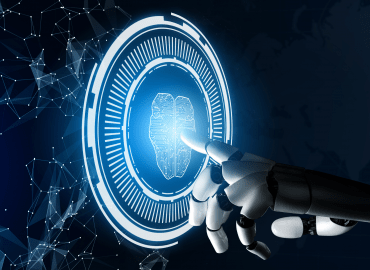IBM’s Mike Beddow describes his experiences with clients using historical and streaming data to improve patient care.
Adrian Bowles: We’re here with Mike Beddow from IBM, who works with cloud and analytics in the public sector and healthcare.
Mike Beddow: Correct.
AB: Is that right?
MB: Correct.
AB: Great. And what we’d like to do today is to talk about continuous intelligence, what your clients are doing, what you’re seeing. So maybe we’ll start there tell us a little bit about what you’re seeing in general. Then we can pick one of those and get into some details.
MB: Yeah, I think the first thing, when I think of continuous intelligence, I think of how can we leverage data no matter where it is, what it is from all various sources? How can we make real-time decisions based on that data? So whether it’s historical data, whether it’s data in movement, social media, data, censored data, IoT data. Whatever it may be, how can we gather that together, collect it, organize it, and ultimately perform real-time analysis to predict outcomes that can help whoever’s utilizing that?
AB: All right. So predict outcomes, make decisions.
MB: Make decisions. Exactly.
AB: Okay. What kind of challenges are people seeing?
MB: What kind of challenges? I think number one is just the vast amount of data. There’s so much data out there, how do we get access to it? Generally it’s very siloed, especially the customers that I’m working with that are in such heavily regulated industries. The secure nature of that data, the sensitivity of that data. Ultimately the organization or the entity that owns that data, how do we get access to it? And then how can we understand it? How can we look in and decipher what it is, what the fields mean? And then from there, getting into the analysis piece. When I’m talking to clients, the one thing I advise is really not diving in headfirst. Right? We’re not trying to essentially boil the ocean here. Let’s have an iterative approach, let’s focus on small wins. And then we’ll eventually get to the greater goal.
AB: Okay. Well with that in mind, I said you’re in healthcare and public sector. Let’s start with healthcare. Any general areas where you’re seeing the uptake?
MB: Well I think healthcare is interesting because the industry is evolving. The industry used to be very focused on fee-for-service. So it was, “How can I process as many patients as I can?” Now we’re moving more towards a value-based care model. So it’s really dependent more so on the outcomes more so than the actual number of patients that we’re seeing.
So how healthcare companies are needing to adjust to take care of that is ultimately getting insight about the patient themselves. And understanding a 360 view of the actual patient focusing on what we are prescribing, what the outcomes they are seeing. And ultimately how quickly are they able to get back up on their feet. So I would say that’s one area where when we’re looking at continuous intelligence, being able to make those real-time decisions on what is best for the patient is going to be essential.
And some use cases we’re seeing there one and two in general. So one that I’m specifically working on is around sepsis. So sepsis is obviously a disease and generally when it’s detected it’s usually too late, because the symptoms are benign. So we’re working with clients to help early detection of sepsis. Also working with outcomes. So understanding what we’re prescribing is that outcome going to affect the patient positively? And again, ultimately how quickly are they able to recover from the disease itself?
So working with that, I mean there’s various amounts of data, right, that goes into that. So there’s medical history, there’s prescriptions, there’s getting into the patient, right? Get into devices and wearables and IoT and things of that nature. So getting back to my earlier point, how can we collect all that data? How can we understand it? And then how can we perform analysis to be able to provide real-time outcomes or real-time predictions, based on the individual themselves? Not based on a collective demographic.
AB: Sepsis is a huge problem. Are there other areas that your clients are working in?
MB: One of the other use cases that we’ve been working a lot with clients is around a maternity experience actually.
AB: Okay.
MB: So it’s about understanding and helping mothers have the most effective and comprehensive maternity experience. So right now we’re working around the analysis of historical data and data about the patient, claims data, things of that nature. But there’s definitely impact around the continuous intelligence piece of this. How can we gain better understanding of the patient themselves, be able to provide a specific prescription or something along those lines to impact that individual.
AB: Okay. So we’ve got data from all kinds of sources. Some historical, some real-time IoT from devices, sensors, whatever. Talk just a little bit about the technology that enables you to take all these disparate sources and make sense out of it.
MB: So right now the main technologies we’re using are IBM Cloud Pak for Data. So it’s our data and AI foundation built on Kubernetes, leveraging Docker. And it gives us the ability to collect the data no matter where it lives. We can organize that data. So perform governance and create rules and policies and things of that nature to define the data. And then ultimately it enables, or provides tools that we can use to create machine learning algorithms. Do not only descriptive, but also predictive analysis to help determine what we need to do for that specific patient that’s being treated.
So that tool enables us to provide the full spectrum of data and AI all the way from the collection to the actual analysis. It also, we’re leveraging IBM Streams, so a tool to provide real-time analysis on the fly. So as that medical data or the device data, as we mentioned, is being streamed to the platform, on the wire we can perform analysis real time and provide real-time insights on that information.
AB: Whereas in the past you’d have to capture it and then analyze it. You’re analyzing it as it comes in.
MB: As it’s coming in. Yeah. As it’s hitting the wire, we’re performing analysis on it.
AB: Terrific.






